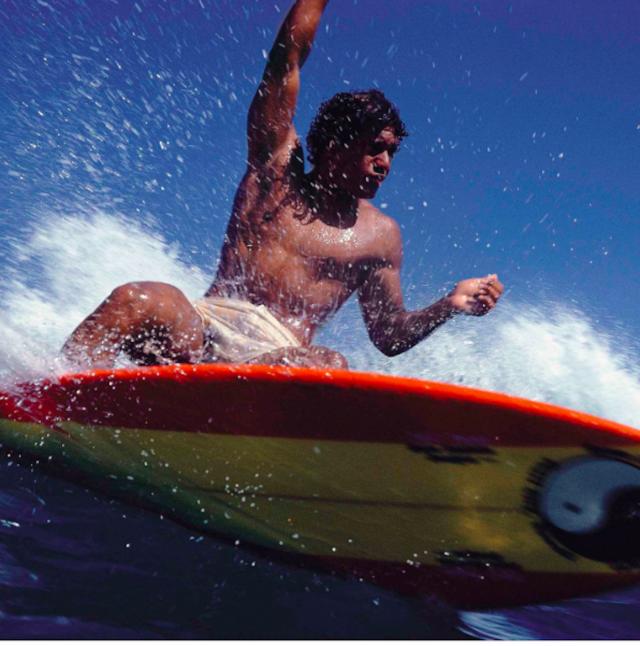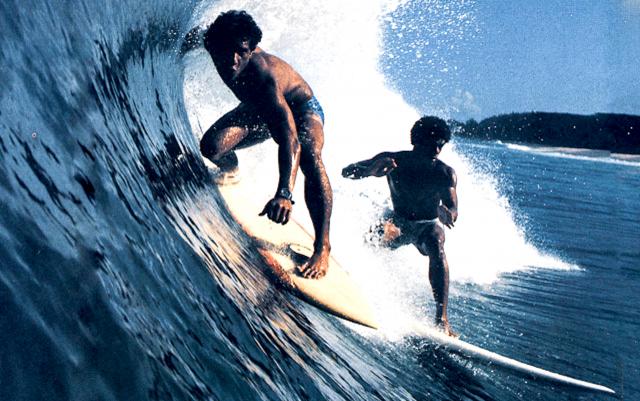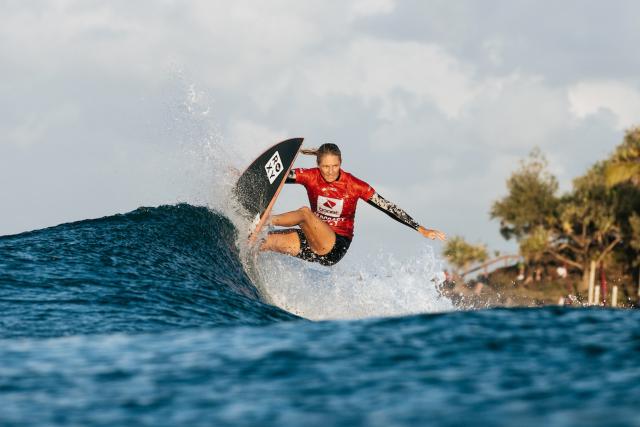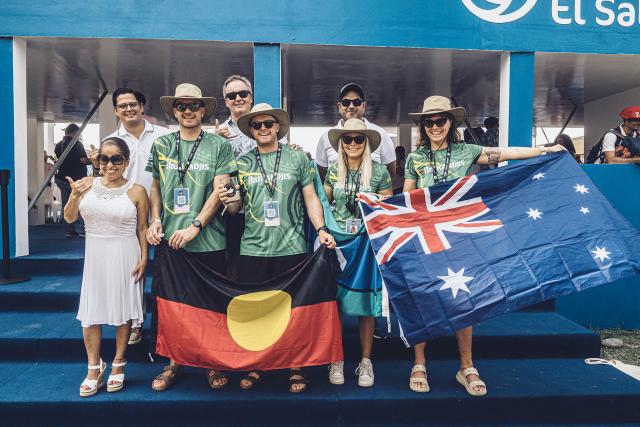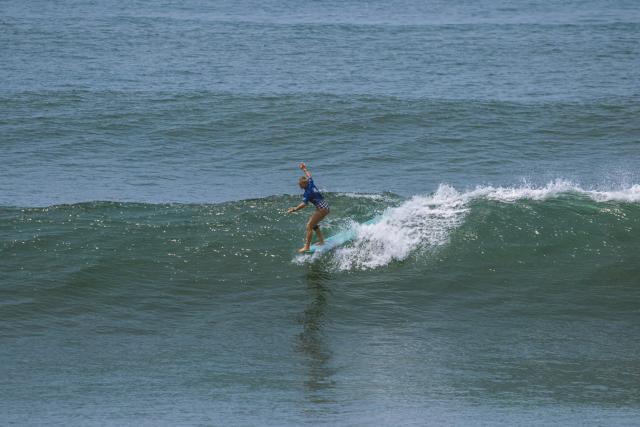“I think surfing right now doesn’t really show any possibility of making a career out of it. In time I think it will, but right now I just want to do it, I want to win, I’m not gonna look back, just go floorboard all the way!”
This was Hawaiian surfing great Dane Kealoha, who passed away last week, talking to me in November 1978 on the North Shore of Oahu, Hawaii, where a few weeks later he would end his second season on the world tour ranked ninth. He was just 20, full of energy, hope and enthusiasm, as well as having an approach to power surfing that we had never seen before.
Naturally, my in-depth profile, Dane’s first, which appeared in the January 1979 edition of the US-based Surfer Magazine, was titled Floorboard All The Way.
When my dear friend Paul Holmes wrote Dane’s last profile for The Surfers’ Journal last year it was titled The Clouds Conceal the Volcano, and Paul ended it aptly and ominously with the line: “From his window, he sees clouds gathering”. Hawaii’s great hope never won a world title but he went floorboard all the way, even long after he should have and, in many ways, he changed surfing forever.
I think two surf writers, working more than 40 years apart, book-end the Kealoha story quite neatly, but it doesn’t make the Great Dane’s departure, far too soon at 64, any easier for those of us still here who have idolised him, or at least the idea of him, forever.
I first saw Dane surf at Backdoor Pipe in 1976, and it was thrilling from the get-go. This nuggety dark-skinned teenager who was only of slightly above medium height, but looked like a giant when he cranked off the bottom or leaned back and showered spray to the horizon with every cutback.
The following year he was on the IPS world tour, the next year he was top 10 and the year after that he was in contention for the title. Only Mark Richards held him back, but you could say that about a whole generation of pioneer pros.
Surf historian Matt Warshaw summed it up neatly in a blog this week: “Let’s talk about the missed world title. He was runner-up to Mark Richards in 1980, but that one wasn’t really even close. MR put a huge distance between himself and the field that year and ran away with it. In 1979, when Dane finished #4 – that was the year, maybe still the best, down-to-the-wire pro tour showdown.
“Dane headed into the final event of the season, the World Cup, in what was basically a three-way tie for first, along with Cheyne Horan and Wayne Bartholomew. MR was fourth, but knew his chances were pretty much nil.
“In big raw surf at Haleiwa, Dane paddled out for his opening heat and absolutely blew a huge homefield advantage, waited too long between waves, let Puerto Rican underdog Santos run the inside, and basically kicked the title away on poor tactics. Bartholomew and Horan did much the same, and Richards came from way back to win his first world title.”
As Paul Holmes wrote: “For the next three years, Kealoha, Richards, and Horan went head-to-head-to-head. Richards would win the title each year, bringing his total to four consecutive. Kealoha would finish second in ’80, third in ’81, and sixth in ’82.”
But by 1983 Dane’s radical repertoire in all kinds of surf had gone next level.
The two Toms, Carroll and Curren, were hovering, but all of Hawaii knew that their time had come. Then the world tour blew itself up.
Holmes again: “There was no doubt among most scribes, pundits, and fellow competitors that Kealoha was on the cusp of winning his own [world title]. Yet when the ’84 tour began, Kealoha was nowhere to be found anywhere on the ASP ratings … Caught in a pro surfing political maelstrom that ultimately ended his career at his competitive peak, Kealoha’s story is nothing short of tragedy.”
The maelstrom was a clash of the titanic egos of Hawaii’s Fred Hemmings and Australia’s Ian Cairns, which resulted in a world tour takeover from IPS to ASP, and Cairns banning all the ASP tour surfers from competing in Hemmings’ Hawaiian Triple Crown.
No one told Dane Kealoha what to do in his own backyard. He competed, winning two of the three events, then after refusing to pay the hefty fine imposed on him by the ASP and losing his seeding for the next season, his pro career was effectively over.
But if the pro tour bosses didn’t want him, the industry certainly did, and he became a top retailer for Quiksilver in Hawaii, where he remained a surf legend for decades to come.
But Dane had been hurt badly, and a dark side emerged, involving chronic drug abuse and family breakdown. He could have been mugged in an alley or given up to despair, but in the end it was cancer that took him last week, on the beautiful isle of Maui, with some of his many children by his side.
Losing is still winning
This is a tale of two ladies of the surf who both showed what they are made of this past week. Firstly, the queen of Snapper Rocks and reigning women’s world WSL champion, Steph Gilmore, found herself on the ropes at the Boost Mobile Pro at the Superbank in the round of 16 against wunderkind Sierra Kerr, a teenage wizard fast-tracking it to the top.
Needing a combination of excellent score with two minutes to go, Steph pulled one of the greatest Houdini acts I’ve ever seen in surfing. First, she wheels around and goes on a wave that doesn’t look that great but fast becomes perfect. And she rides it to perfection for a nine. Less than a minute to go, on the paddle back out she takes off on another nothing that stands up for her and she milks it all the way past Little Marley for a high seven. Bingo.
Eventual winner India Robinson got her in the semis, but oh, what a show from the champ.
Next, our own Kirra Molnar, who’s had more podiums this year than she’s had hot dinners, is one of two girls representing Australia at the ISA World Longboard Titles in El Salvador.
It’s loopy, weird surf that sometimes gets quite gnarly, but Kirra gets the job done, fighting her way through several repechage heats to make the next round. Australia finishes a lowly 13th, but Kirra never says never, fighting like crazy and finally copping the chop at round six.
Neither of them won, but what courageous fighters, and great surfers.

